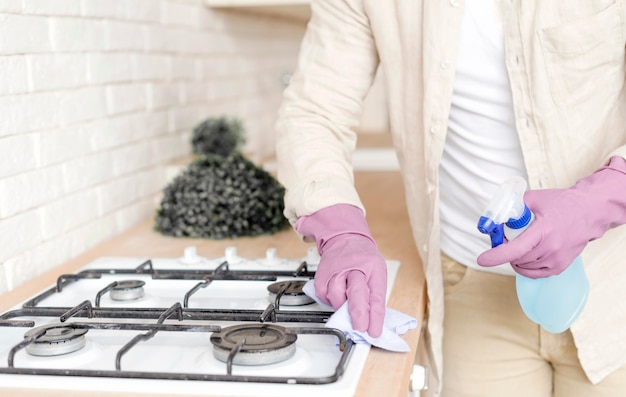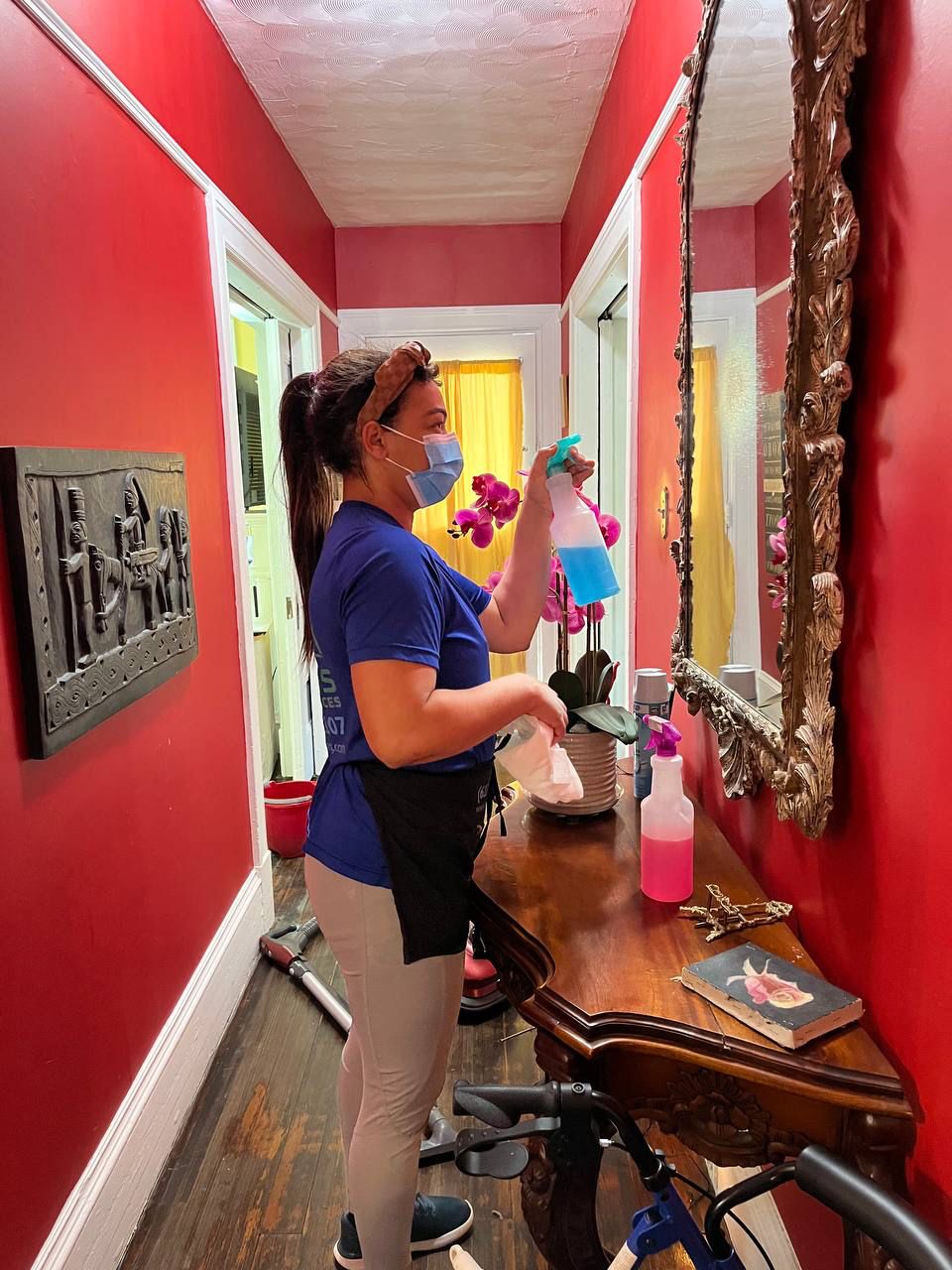
Ironing is a crucial part of maintaining a polished appearance for your clothes. However, over time, your trusty iron’s soleplate can accumulate residue, burnt marks, and mineral deposits, affecting its performance. In this guide, we’ll show you how to clean an iron plate effectively, ensuring your iron glides smoothly and leaves your garments wrinkle-free.
Understanding Your Iron’s Soleplate
Before diving into the cleaning process, it’s essential to familiarize yourself with the components of your iron’s soleplate:
- Steam Holes: These small openings allow steam to escape, aiding in the ironing process.
- Steam Vents: Connected to the water reservoir, steam vents disperse moisture onto your clothes.
- Iron’s Reservoir: This compartment stores water for steam generation.
- Soleplate: The flat, heated surface that makes contact with your clothing.
The Cleaning Process

1. Gather Your Supplies
Before starting, ensure you have the following items ready:
- Baking Soda
- Distilled White Vinegar
- Cotton Swabs
- A Damp Cloth
- A Cotton Ball
- A Soft Rag
- Paper Towels
- Nail Polish Remover (acetone-based)
- A Dryer Sheet
- White Vinegar
- Old Towel
- A Toothbrush (old or unused)
- Warm Water
2. Safety First
Always ensure your iron is unplugged and completely cool before cleaning burnt iron. This prevents any accidental burns during the process.
3. Initial Cleaning

Begin by wiping hot surface of the soleplate with a damp cloth to remove any loose dirt or debris. Gently scrub the steam vents and holes with a cotton swab to clear blockages.
4. Dealing with Burn Marks
For burn marks on the soleplate, dampen a cotton ball with nail polish remover (acetone-based) and gently rub the affected area. Be cautious not to scratch the surface.
5. Removing Mineral Deposits
Mineral deposits can accumulate over time, affecting steam output. To remove these deposits, mix equal parts distilled white vinegar and water in a bowl. Dip a soft rag in the solution, wring it out, and then wipe the soleplate. Use a cotton swab for hard-to-reach areas.
6. Tackling Tough Stains
For stubborn stains, apply a mixture of baking soda and water to the stain. Let it sit for a few minutes, then scrub with an old toothbrush. Wipe away the residue with a damp cloth.
7. Preventing Future Buildup
To prevent future mineral deposits and maintain a clean iron soleplate, use distilled water in your iron’s reservoir instead of tap water. Distilled water doesn’t contain minerals that cause buildup.
8. A Final Touch
Finish by wiping the soleplate clean paper towel with a dryer sheet. This not only removes any lingering residue but also leaves a pleasant scent.
Common Mistakes to Avoid
While cleaning your iron plate, it’s essential to be aware of potential pitfalls that could damage your appliance or compromise your safety. Here are some common iron cleaner mistakes to avoid:
1. Using Harsh Abrasives
Avoid abrasive materials like steel wool or harsh scrubbing brushes. These can scratch the soleplate and damage its non-stick coating.
2. Neglecting Regular Cleaning
Don’t wait for heavy buildup to tackle your iron’s soleplate. Regular cleaning ensures steam iron has efficient performance and prevents tough stains from forming.
3. Skipping Safety Precautions
Always unplug your iron and allow it to cool completely before cleaning hot iron out. Ignoring this safety step can lead to burns or electrical hazards.
4. Overusing Nail Polish Remover
While effective for removing burn marks, excessive use of nail polish remover can damage the soleplate. Use it sparingly and only on stubborn stains.
5. Using Tap Water
Using tap water instead of distilled water can lead to mineral deposits, even if you clean your iron regularly. Stick to distilled water for better results.
By being mindful of these common mistakes, you can ensure that your iron plate remains in excellent condition for years to come.
Conclusion

A clean iron plate is essential for wrinkle-free, professional-looking clothes. By following these simple steps, you can ensure that your iron remains in excellent condition and continues to serve you well. Incorporate this cool iron soleplate cleaning routine into your laundry day to maintain the efficiency and longevity of your trusted appliance.
Remember to perform these cleaning steps regularly to keep your iron’s soleplate in pristine condition, a cool iron ready to tackle any wrinkled outfit with ease.
Maintaining household appliances is crucial for a well-functioning home. If you’re interested in professional cleaning services to keep your entire home sparkling, don’t hesitate to reach out to us. We offer comprehensive cleaning solutions tailored to your needs.
With a clean ironing board and a refreshed wardrobe, you’re ready to make a lasting impression. Happy ironing!







